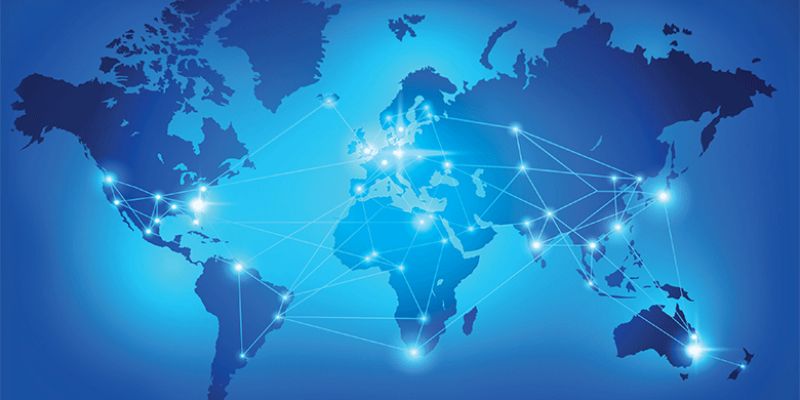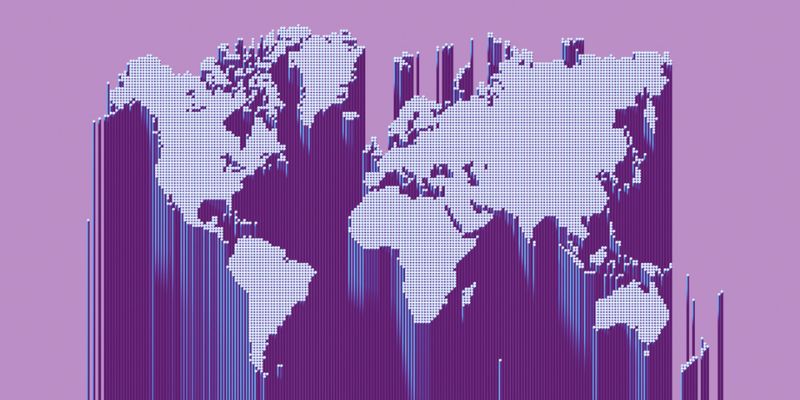National vs. International Platform Regulation: Bridging the Policy Gap
I dive deep into the tussle of National vs. international approaches to platform regulation – a hot topic indeed. Governments everywhere are scrambling to control what happens online, but guess what? There’s no one-size-fits-all solution. It’s a tricky balancing act between guarding a country’s values and keeping the internet open for everyone. And I kid you not; achieving harmony is like threading a needle while skydiving. We’ll explore global efforts to reign in digital behemoths, and I’ll show you why both local and universal strategies need to shake hands. Ready to bridge the policy gap with me? Let’s roll!
Understanding the Landscape of Digital Platform Governance
The Balancing Act: National Sovereignty vs. Global Internet Platforms
When we talk about internet rules, each country has its own. For example, what is okay to share online in one place might not be somewhere else. This makes it hard for global internet platforms that work all over the world. They must listen to each country’s laws but also keep the internet free and open. A big question comes up: should online rules be the same everywhere, or should each country decide?
Tech giants face a tricky road. They must show respect for local values and laws. At the same time, they should support free speech and global connection. Tech companies like Facebook or Google can’t just use one rule everywhere. They must change their ways to fit into every country they work in.
Moving Towards Harmonization: International Efforts in Digital Platform Regulation
Countries are trying hard to make rules for digital platforms that work well across borders. They want to make sure that the rules are fair and that companies are doing the right thing. But they also want their people to be safe online. One way to bring rules together is by working on international agreements.
These agreements are hard to make but very important. They help make sure that rules about things like privacy or hate speech are similar around the world. When everyone agrees, it’s easier for companies to follow the rules. This makes the internet a better place for all of us.
In making these rules, people look at both the small details and big ideas. The goal is to find a balance. This balance should help keep the internet safe and let countries have their own say. We need rules that make sense for everyone, no matter where they are.

Key Challenges in Cross-Border Content Regulation
Respecting Regional Digital Policies While Promoting Global Standards
Navigating digital platform governance means tackling a tough puzzle. Each country has its own rules, and folks often disagree on what’s best. But hear this: we can’t let borders stop us from making the internet better for all.
Imagine trying to play a game where each player has different rules. Tricky, right? That’s what cross-border content regulation is like. We need to honor local laws yet work toward rules that make sense worldwide. It’s like trying to color inside the lines while making a new picture.
Tech giants need to follow laws in every place they do business. But these companies also shape our daily lives, no matter where we live. So, who decides the rules: countries or companies? We need to think hard about this. We want a free and open internet but also want folks to feel safe.
Addressing Content Moderation Disparities Amidst Diverse Legal Frameworks
Let’s chat about content moderation. It’s like when teachers make sure kids play nice. But every country’s rules are different. Some places value free speech a lot, while others take a tougher line on harmful stuff.
Moderating what folks can say online varies around the world. Some rules are strict, some are loose. It’s tough to find the right balance. We need to make sure people can talk freely, but we also need to keep folks safe from harm.
How we handle this is key. Tech companies are trying hard to respect local customs and laws. At the same time, they’re trying to be fair to everyone, everywhere. It’s a dance between global standards and respecting the way each place does things.
It’s not easy, but I believe we can get there. We can build an internet that honors our differences but also brings us together. Let’s work toward rules that help everyone, not just some of us. When we do, we’ll make the digital world a better place for you and me.

Harmonizing Approaches to Tech Giants Accountability
Strengthening Global Collaboration for Platform Liability and Compliance
We face a tough task today. How do we deal with tech giants? These big firms, like social media kings, have users in every corner of the world. Each place has its own rules, yet online life knows no borders. We must figure out how to make fair rules that everyone can follow.
So, how can nations work together better to control these giants? First, we talk. We bring everyone to the table to craft rules that hold platforms accountable while protecting rights. This means countries need to agree on basics, like how to handle user data and what content crosses the line.
For instance, many places have different views on free speech. Some say it’s open and others have strict limits. But when people chat online, these differences can clash. We need to agree on how free speech online will work. This keeps users safe and happy, and it makes sure tech firms know the rules.
Strategies for Ensuring Tech Company Accountability Across Borders
Next, we need strategies that work everywhere. What does this look like? It means creating rules that fit all, no matter where a user logs in from. Tech firms must know what’s okay to share online and what’s not. They also need clear rules on how to keep user data safe. This way, no one gets a bad deal.
One big idea is a digital single market strategy. This could make one big digital space where rules are the same across countries. It’s like making a team play with one playbook, no matter which field they’re on.
Also, we might need new taxes for digital services. This can help pay for the costs of these big online spaces. Just like how we pitch in for roads and schools, perhaps we should all share the cost of keeping our online towns clean and orderly.
Lastly, all of us have to stay sharp. Tech changes fast, and so must our rules. We need to keep talking, keep agreeing, and keep adjusting. It’s like a dance where the music keeps changing. We need to move together, or we’ll all trip over our own feet.
In short, tackling the power of global tech giants means we all need to think big. It’s like putting together a puzzle. If each piece isn’t right, the whole picture won’t come together. By talking and making rules that work for all, we can build a digital world that’s fair and safe for everyone.

Bridging Policy Gaps: International Standards vs. Domestic Regulations
The Role of GDPR and International Data Protection in Shaping Platforms’ Policies
When we talk about keeping online info safe, the GDPR from Europe is a big deal. It makes sure that companies take good care of our personal details. This rule has pushed other places to think about privacy too. So, companies across the world have to be careful about how they handle user data, no matter where their users live. Now, with all these different rules, tech companies face a challenge. They must follow each country’s laws but also keep things smooth for users everywhere.
Here’s the thing: Keeping user data safe is super important. But, it can be hard for companies because every place wants something a little different. Europe’s GDPR wants companies to tell users how they use their data and to keep it secure. This means companies must change how they work to respect these rules. If they don’t, they could get hit with big fines. So, they put a lot of effort into following these rules. It’s a big job, but it’s all about keeping our info safe on the internet.
Future Trends: Anticipating Changes in Internet Governance and Platform Regulation
It’s tricky to guess what will happen with internet rules, but some trends are starting to show. Countries around the world want to have a say in how digital companies run their business. They want to make sure these companies are fair and safe for everyone. This means there might be new rules coming out to keep the power of big tech companies in check. Also, countries may work together more to find common ground on digital rules. This way, all the different laws might fit together better and make things easier for tech companies and users alike.
Looking ahead, it’s clear that the way we use the internet is going to keep changing. As these changes happen, so will the rules that guide tech companies. People are coming up with new ways to help countries understand each other’s rules better. This could mean less headache for companies and more trust for us, the users. And when it comes to our freedom to speak our minds online, we can expect ongoing discussions about how to protect it while also making sure the internet is a safe place. This balancing act is tough, but it’s worth it to make sure the net stays open and good for everyone.
In short, the world of internet rules is always shifting. Countries are trying to protect their people while also making room for the digital world to grow. By working together, we can bridge the gaps between different laws. This will help make sure that our online spaces are fair, safe, and awesome for everyone, no matter where we live.
In this post, we dived into the complex world of digital platform governance. We looked at how nations strive to keep their power while facing the rise of global internet giants. We explored efforts to create rules that work worldwide, and we saw the tug of war between local policies and global tech norms.
We saw the hurdles in overseeing content across borders, with each place having its own rules. It’s tough but vital to have standards that everyone can follow. Dealing with different views on what’s right or wrong online is no small task.
We talked about making big tech firms answerable to the rules, and we shared ways to keep them in check everywhere. It’s about teams working together across the globe.
Lastly, we discussed how big rules like the GDPR guide tech policies and what new shifts in control of the web and tech firms we might see.
These topics aren’t simple, but we have to tackle them. Our digital world is worth protecting and shaping right. Here’s to building a future where tech serves us all, safe and sound. Let’s keep the conversation going and work for progress.
Q&A :
What are the key differences between national and international platform regulation approaches?
When comparing national vs. international approaches to platform regulation, the main differences often lie in the scope and uniformity of the rules. National regulations are tailored to a country’s specific legal system, cultural values, and market needs, which means they can differ significantly from one country to another. International regulations seek to establish a broader, more harmonized set of standards that can be applied across multiple jurisdictions, ideally simplifying compliance for platforms operating globally.
How do national regulations impact international tech platforms?
National regulations can have a profound impact on international tech platforms, often requiring them to make significant adjustments to their operations and policies to comply with local laws. This could involve data localization requirements, adherence to local content moderation laws, or implementing specific consumer protection measures. International tech platforms may need to navigate a complex web of national regulations, which can be resource-intensive and challenging.
What roles do international organizations play in platform regulation?
International organizations often aim to facilitate cooperation and dialogue between different countries to create more aligned and effective platform regulation strategies. They can provide guidelines, best practices, and frameworks that countries can choose to adopt or adapt. These organizations can also serve as platforms for negotiating international treaties or agreements aimed at regulating digital platforms across borders.
Are there any successful examples of international platform regulation cooperation?
There have been initiatives by international organizations or multi-stakeholder groups aimed at creating more cohesive platform regulation. For instance, the European Union’s General Data Protection Regulation (GDPR) is an example where multiple nations have agreed to a common framework to protect user data, inspiring similar regulations in non-EU countries and affecting international platforms’ global operations. Ongoing discussions in forums like the G20, OECD, and the Internet Governance Forum also reflect efforts towards international cooperation on platform regulation.
How could conflicting national and international platform regulations be reconciled?
Conflicting national and international platform regulations can be reconciled through a variety of mechanisms, including bilateral or multilateral agreements, international treaties, and ongoing dialogue facilitated by global organizations. Additionally, platforms can adopt the most stringent regulations as their baseline to ensure compliance across jurisdictions, or they can push for the adoption of international standards that would preempt national laws. Effective communication and negotiation are key to finding common ground and reconciling differences.



